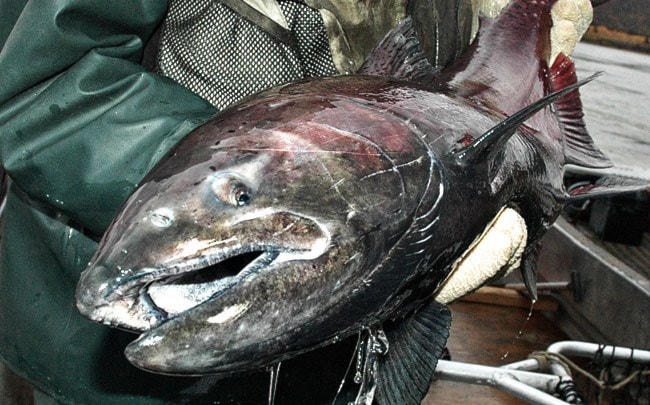The Yukon is preparing for another medium to low salmon run this year.
On Thursday, the Yukon River Panel set the 2010 chinook salmon border passage escapement goals at 42,500 to 55,000 fish.
The panel was in bilateral meetings from Tuesday to Thursday of last week.
This year, the panel issued a range of salmon instead of a single point as it has done in previous years.
This is because it is very difficult to manage to a single number, explained Frank Quinn, the Department of Fisheries and Oceans Yukon manager and the panel’s Canadian chair.
“So if the run comes in weak they’ll be trying to get over that 42,500 point,” he said.
“If it’s a medium run they’ll go for the midpoint of around 47,000, which is higher than last year.
“And if it’s a strong run, which we don’t anticipate, the goal will be 55,000.”
Last year, the escapement goal was 45,000 fish.
Because Alaska fisheries managers had failed to meet their escapement goals for 2007 and 2008, they imposed tough restrictions on commercial and subsistence fisheries last year.
As well, heavy sediment in the river obscured sensors, preventing officials from properly assessing the run.
So they reduced the window for the fishing season and protected the first pulse of chinook salmon to enter the Yukon River, which typically contains the strongest fish.
A large percentage of those fish are usually Yukon-bound.
As a result of these restrictions, around 60,000 salmon managed to sneak across the border.
These numbers are still considered to be below average and the panel is expecting a similar run this year.
“We’re hoping that this year there won’t be any restrictions on the First Nations’ fisheries,” said Quinn.
“But as for the commercial, domestic and sports fisheries, right now it doesn’t look like there will be an opportunity for those groups to fish.”
A final decision on these fisheries will be made in season.
The Alaskans are still developing this year’s management plan.
Last year, Yukon First Nations took in 3,791 salmon.
Sport fishing landed 125 salmon, commercial fisheries took 364 salmon and domestic subsistence anglers took 17.
The chinook salmon population is still healthy, said Quinn.
He hopes the low numbers of salmon that we’ve seen in the past few years could simply be part of a natural cyclical decline.
However, 2003 was a peak year - when there were more fish back on the spawning ground than there had been in a long while.
That should have made 2009 a busy year, when the six-year-old fish returned to the Yukon to spawn.
The Department of Fisheries was expecting around 120,000 to return last year.
However, only half this number made it through.
This could partially be due to natural problems such as a cold winter, low quality of feed or predators.
But it could have also been caused by bycatch in the pollock industry, which inadvertently caught 121,600 salmon in 2007.
Thanks to tougher regulations and more oversight, these numbers have dropped to 20,000 in 2008 and 12,000 in 2009.
Contact Chris Oke at
chriso@yukon-news.com
